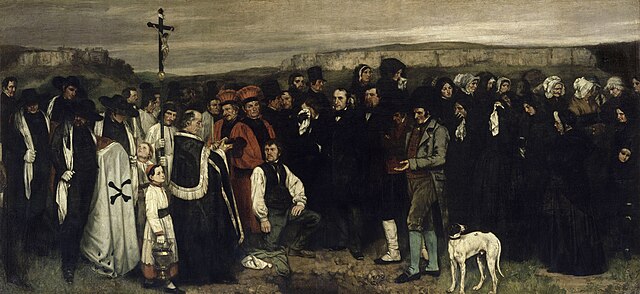Charles de Groux or Charles Degroux was a French painter, engraver, lithographer and illustrator. As he moved to Belgium at a young age and his whole career took place in Belgium he is usually referred to as a Belgian artist. His depictions of scenes from the life of the disadvantaged and lower-class people of his time mark him as the first Belgian social realist painter. These works made him the precursor of Belgian Realist artists such as Constantin Meunier and Eugène Laermans.
The coffee grinder
The farewell
The eviction
The blessing before supper
Social realism is the term used for work produced by painters, printmakers, photographers, writers and filmmakers that aims to draw attention to the real socio-political conditions of the working class as a means to critique the power structures behind these conditions. While the movement's characteristics vary from nation to nation, it almost always uses a form of descriptive or critical realism.
Grant Wood's magnum opus American Gothic, 1930, has become a widely known (and often parodied) icon of social realism.
Charles de Groux, The Blessing, 1860
Jacob Riis, Bandit's Roost, 1888, from How the Other Half Lives. Bandit's Roost at 59½ Mulberry Street was considered the most crime-ridden part of New York City.
Gustave Courbet, A Burial At Ornans







